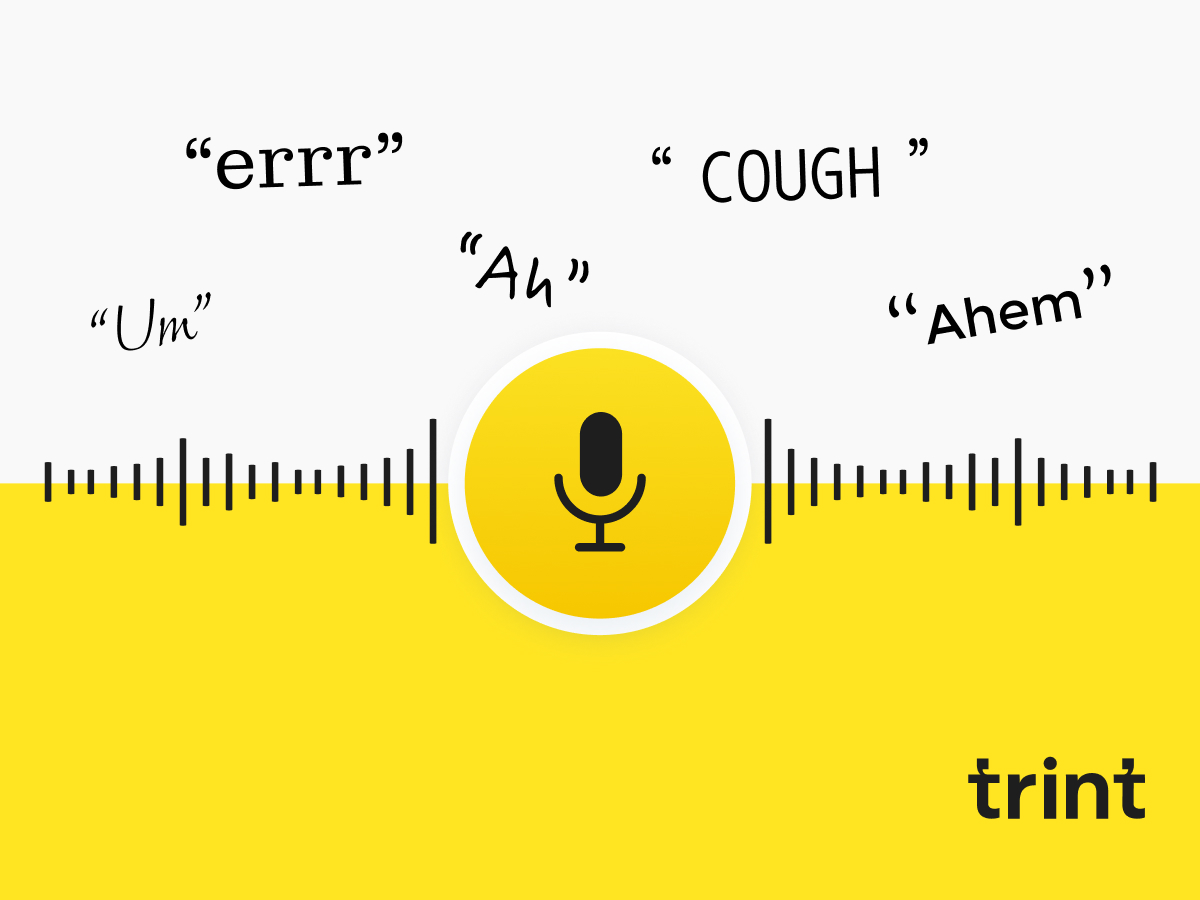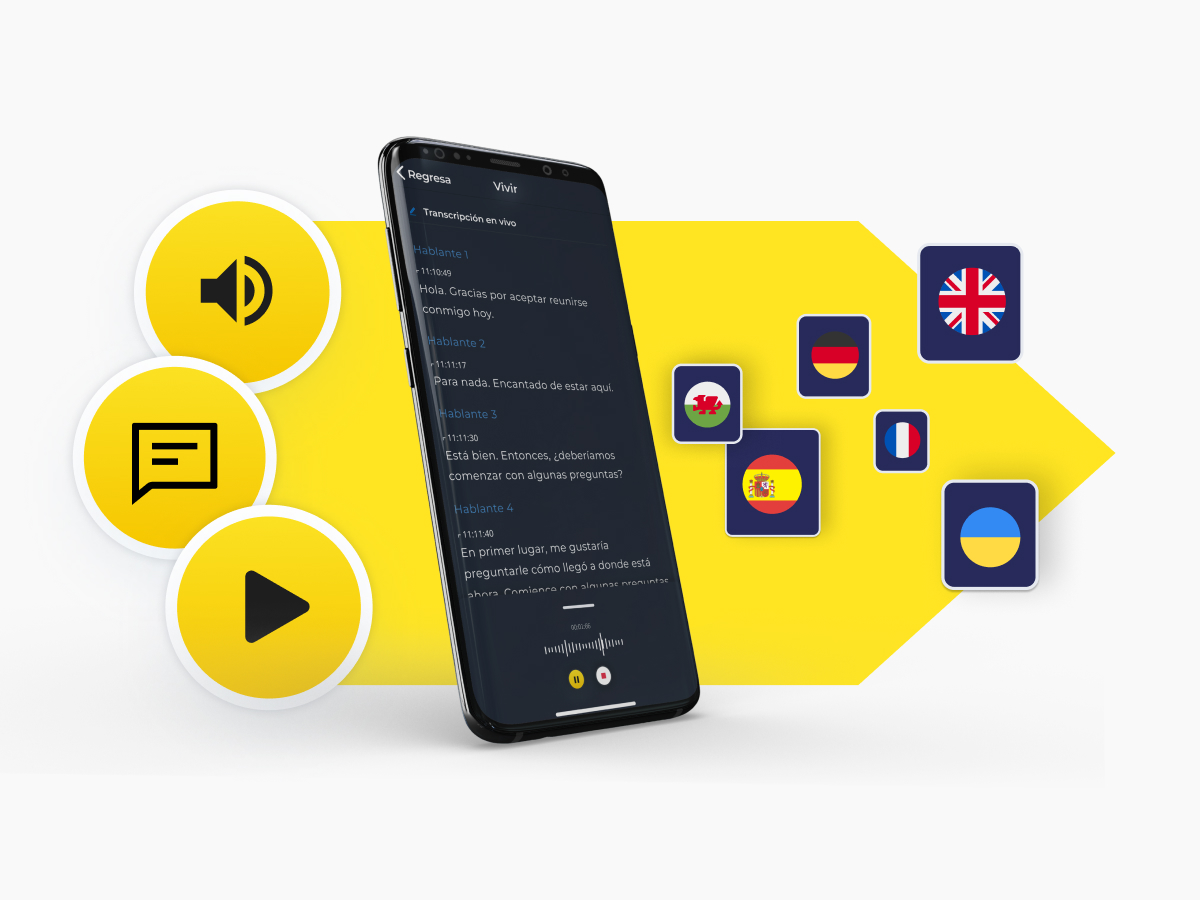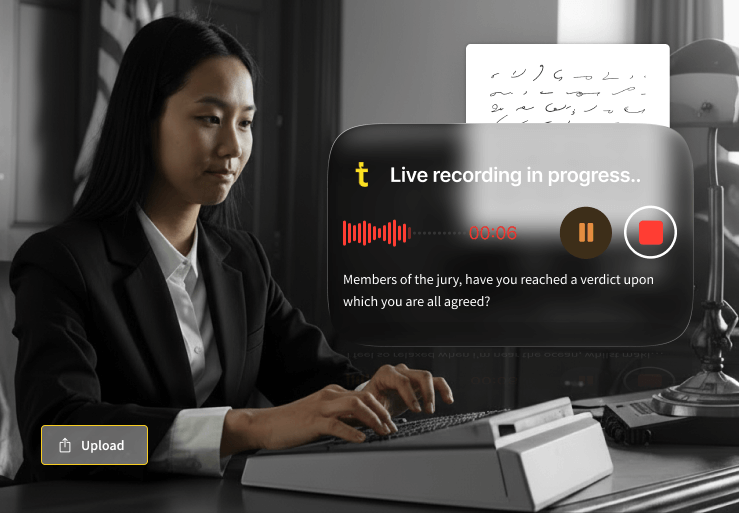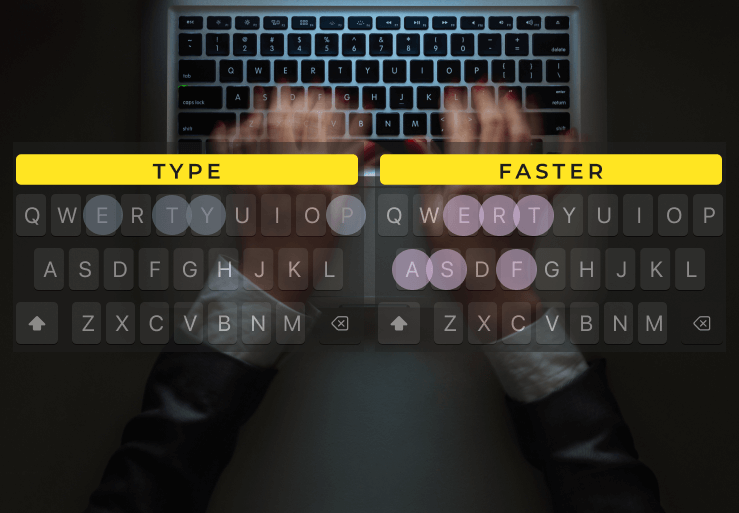
Transcriptor sustantivo 1. Persona que crea copias escritas de material de audio o video. 2. Un trabajo que pronto será reemplazado por la transcripción automatizada.
En Trint conocemos un par de cosas sobre transcripción. Al fin y al cabo, nuestro software ayuda a empresas de todo el mundo a transcribir documentos rápida y sin complicaciones.
Pero, ¿qué es exactamente la transcripción y cómo se hace? ¿Y cómo están cambiando tecnologías como Trint la forma en que la transcripción funciona en el entorno laboral moderno?
En este artículo responderemos todas estas preguntas y más. Vamos a ello.
¿Qué es una transcripción?
Antes de hablar sobre lo que hace un transcriptor, deberíamos explicar qué es una transcripción.
Una transcripción es una versión escrita del contenido hablado de otro medio, como audio o video. Por ejemplo, si escribes cada palabra de una entrevista en video, has hecho una transcripción. En ese caso, tú eres el transcriptor. (Y sí, podrías sentir que se han esfumado unas cuantas horas de tu vida.)
La transcripción puede hacerse manualmente por un transcriptor humano o con una herramienta de transcripción con IA.
Tipos de transcripción: literal vs no literal
No todas las transcripciones son iguales. Hay dos categorías generales: verbatim (literal) y no verbatim (no literal).
En una transcripción literal, se transcribe cada palabra o sonido. El objetivo es crear una versión escrita del archivo que sea completamente fiel a los eventos y al habla del archivo original. Eso incluye sonidos de relleno —como 'eh', 'ah' y 'um'— así como ruidos no verbales, como toses o risas. Para contenido de video, una transcripción literal podría incluso incluir descripciones de gestos o movimientos de manos del hablante. Las transcripciones literales a veces se llaman transcripciones verdaderas, estrictas o completas.
Con la transcripción no literal, el transcriptor elimina las palabras de relleno y los ruidos de fondo para agilizar la transcripción y clarificar el significado del texto. Esto se conoce como transcripción editada o fluida.
En algunos contextos, el transcriptor va un paso más y utiliza su criterio para eliminar cualquier cosa que no sea estrictamente necesaria para entender el significado de lo que se dice. Esto se llama transcripción inteligente o limpia.

¿Qué es un transcriptor?
Un transcriptor es alguien que hace una copia escrita de un archivo no textual, como una grabación de audio o video. Este rol, también conocido como 'transcriptionist', implica escuchar o ver un archivo y escribir meticulosamente cada palabra.
Los transcriptores pueden trabajar para empresas de transcripción, como freelancers, o a veces internalizados. Históricamente, la transcripción también formaba parte de la descripción de puestos de secretarios, asistentes personales, personal administrativo, paralegales y trabajadores junior en varias industrias. Sin embargo, todo esto está cambiando gracias al auge de software de transcripción automatizada como Trint.
¿Qué habilidades necesita un transcriptor?
- Habilidades de mecanografía sólidas. Los transcriptores deben escribir rápido y con precisión.
- Atención al detalle. Los errores pueden ser costosos, por lo que un transcriptor debe tener una excelente atención al detalle.
- Excelentes habilidades de lenguaje escrito y corrección. No hay espacio para faltas de ortografía o gramática en una transcripción de calidad.
- Capacidades auditivas. Las personas sordas o con discapacidad auditiva podrían no poder transcribir audio sin usar software de transcripción u otras herramientas asistivas.
- Autodirección y concentración. Transcribir archivos largos puede ser tedioso, por lo que la concentración sostenida y una buena gestión del tiempo son clave.
Incluso para transcriptores experimentados con todas las habilidades mencionadas, la transcripción manual puede seguir siendo muy laboriosa. Como regla general, a un transcriptor le llevará al menos cuatro horas transcribir una entrevista de una hora (Universidad de Oxford).
Las tarifas de transcripción suelen depender de la duración y la complejidad del archivo. Freelancers o agencias pueden cobrar por hora o por minuto de audio. Así que los costes se pueden acumular rápidamente.
¿Qué es la transcripción automatizada?
La transcripción puede ser costosa, lenta y tediosa. Pero no tiene por qué ser así. Hoy en día, en lugar de contratar a un transcriptor, las empresas pueden usar una herramienta de transcripción especializada como Trint.
Impulsado por IA avanzada, Trint puede transcribir audio, voz o video a texto en hasta 40 idiomas, todo en cuestión de minutos. No más esperar horas a que vuelva un documento del transcriptor: con Trint, tu transcripción está lista para revisar y editar en solo unos instantes.
Y puedes olvidarte de las tarifas por hora y honorarios. Trint puede transcribir grabaciones complejas con múltiples hablantes de hasta tres horas. ¿Necesitas transcribir una grabación aún más larga? Simplemente divídela en archivos más pequeños.
Eliminar al transcriptor no significa comprometer la precisión o la calidad. Las transcripciones de Trint alcanzan hasta un 99% de precisión. Además, nuestras herramientas colaborativas de edición te permiten verificar, revisar y perfeccionar tus transcripciones para asegurar que todo cumpla con tus estándares.
La transcripción automatizada también puede ofrecer una alternativa más segura a los transcriptores humanos. Confiar en acuerdos de confidencialidad y controles de seguridad mejorados puede ralentizar tu flujo de trabajo, y aun así no puedes descartar por completo una violación de datos —ya sea por error humano o algo más siniestro. Pero con la transcripción automatizada, tus archivos permanecen dentro de tu organización.
Trint cuenta con la certificación ISO 27001 con servidores cifrados tanto en la UE como en EE. UU. y nunca accedemos a tus archivos. Por lo tanto, puedes confiar en nosotros para mantener tus archivos privados bajo llave.
‚Äç

¿Qué industrias usan la transcripción?
Empresas de casi todos los sectores recurren a la transcripción para convertir material bruto y audio en contenido pulido. Este proceso esencial apoya flujos de trabajo en redacciones, empresas de medios, bufetes de abogados, empresas financieras y entornos educativos.
Los casos de uso de la transcripción varían según la industria. Los profesionales del derecho transcriben declaraciones de testigos y procedimientos judiciales para construir sus casos. Las redacciones y los creadores de contenido transcriben entrevistas y material bruto para crear artículos y reportajes. Investigadores en instituciones educativas transcriben entrevistas para compilar, analizar y digitalizar su investigación. En el mundo corporativo y financiero, la transcripción facilita la toma de actas y simplifica las comunicaciones.
Otro caso de uso clave de la transcripción en todas las industrias es hacer el contenido más accesible. Puede usarse para generar subtítulos para vídeo, para garantizar que todo el mundo pueda disfrutar del contenido. O bien, la transcripción podría usarse para crear una versión legible de una reunión en vídeo para empleados y estudiantes sordos o con discapacidad auditiva.
Muchas empresas también usan la transcripción para potenciar su marketing y hacer más con menos. Los responsables de marketing y los redactores pueden transformar rápidamente contenido de audio y visual en blogs, publicaciones sociales, boletines y más —rápido.
‚Äç
¿Son lo mismo transcripción y traducción?
En pocas palabras: no, la traducción y la transcripción no son lo mismo. La transcripción consiste en crear una copia escrita de un archivo en el mismo idioma. La traducción significa convertir un texto de un idioma a otro.
Un archivo puede ser transcrito y traducido simultáneamente, pero esto es lento y requiere un transcriptor bilingüe altamente cualificado. Es mucho más fácil transcribir un archivo usando una herramienta automatizada y luego traducir la transcripción —idealmente con la misma herramienta.
Con Trint, puedes traducir tus transcripciones en cuestión de momentos. Con más de 50 idiomas compatibles, Trint facilita más que nunca llegar a audiencias globales sin traducción manual.
En comparación con la transcripción manual, Trint es una obviedad —especialmente para industrias como el periodismo, el derecho, las finanzas, la educación y la creación de contenido. Pero no te fíes solo de nuestras palabras. Prueba Trint ahora con una prueba gratuita o solicita una demostración para ver nuestras herramientas de transcripción revolucionarias en acción.
‚Äç

DON'T take our word for it
Download our eBook, Telling Stories Faster With Trint, and hear how Trint is making content creation faster, easier and, most importantly, painless for newsrooms across the world.
Download








